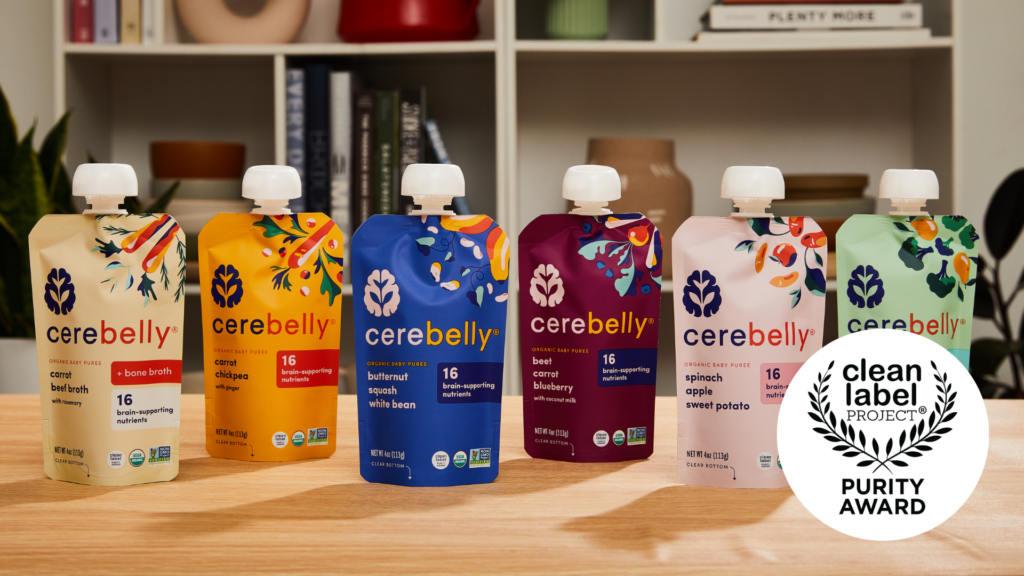Before Solids: the first brain food
By Morgan Dixon, Lactation Specialist & Head of Community at Swehl
Ah, breastfeeding—something we’ve all undoubtedly heard of (ya know, blueprint of civilization and all)—and if you’re pregnant, you’re likely to be getting a lot of (unsolicited!) questions around your plans to feed. I’ll preface all of this by saying that when it comes to feeding your baby, what that actually looks like is entirely up to you. However, if you’re curious about breastfeeding, how the heck it works, and why breastmilk is great for your baby (great, and also very, very cool), read on.
There’s a reason it’s called ‘Golden Milk’
Breastmilk is truly the perfect form of nutrition for your baby’s first year of life (with the addition of solid foods around 4-6 months of age—more on that later.) It is packed with nutrients, minerals, carbohydrates and fats, plus all sorts of other nourishing properties to help babies build healthy brains and bodies.
Before I proceed: I am a Lactation Specialist and an obvious proponent of breastfeeding. However, I will also be the first to say that if formula is what works best for your family, go for it—formula is medicine for some babies, and introducing formula correctly can even lengthen a breastfeeding journey.
But as I’m dissecting the properties of breastmilk, here are the facts: there are a bunch of truly great formulas on the market these days, but the one thing they have not been able to replicate is the customized nutrition that breastmilk offers.
While lipids and lactose are a bit easier to recreate, it’s the HMO’s (or Human milk Oligosaccharides) that make breastmilk magical. You know all of that talk about breastmilk being antiviral, anti-bacterial, and immune system boosting? It’s all thanks to those HMO’s.

Now let me blow your mind: breastmilk is actually so customized that every time your baby feeds at your breast, your body will analyze their saliva to learn your baby’s exact nutritional needs at that precise moment. This means that your breastmilk will change its nutritional structure from the previous feed to cater to what your child’s body is asking for within a mere ten minute window.
To break it down further: let’s say that you’re waiting in line at the grocery store, someone sneezes, and a viral droplet lands in one of your baby’s mucus membranes. Your baby’s saliva will cue your body that it needs to make some protective antibodies for them to have in their next feeding session to fight whatever virus they were exposed to.
As a super bonus, breastmilk is one of the best things to use to clear up an eye infection or clogged tear duct. Same goes for relieving congestion in the nose. Bottom line: breastmilk is the nutritional gold standard and we only continue to discover the breadth of its benefits.

How Breastmilk Works (Hint: Not Like Turning On a Faucet)
I’d say one of the most common themes around breastfeeding is fear of low supply. In fact, it is highly likely that you’ve heard a story about how someone’s supply went away, seemingly out of nowhere.
Clinically speaking, diagnosed low supply is actually quite rare and perceived low supply is more often what people are referencing. Low milk supply is a legitimate issue that women experience, which is why education early on about how supply even works is key! Here’s the thing—if you are in your second trimester of pregnancy or more, you already have breastmilk. It’s crazy that this isn’t a universally known fact! You may even see some colostrum leaking from your nipples throughout your pregnancy.
Here’s why this matters:
If women knew what their bodies were up to, we’d all be much less inclined to think of breastmilk as a thing that just disappears. The reason you aren’t lactating during pregnancy is due to a magical dance of hormones. These hormones are responsible for a lot that goes on in pregnancy, including breastmilk production. While pregnant, you have a lot of progesterone, which suppresses the milk-producing hormone, prolactin.
Once you give birth and you then birth your placenta, all of the progesterone leaves your system and the prolactin can finally do its thing. From birth on, milk supply is primarily dictated by frequency of feeding. The rule of thumb is—outside of having a diagnosed supply issue (which can typically be resolved by working with a doctor or lactation specialist)—if you want to increase your supply, increase the amount of feedings (or pumping sessions). The more milk you are expressing, the more your body will make.
Nourish Yourself to Nourish Your Baby

This is where nutrition starts to play a big role. You want your body to be nourished so that you can make high quality milk, and also so you can replenish yourself after giving birth. Some things to focus on incorporating are great quality fats, foods that are rich in iron, and lots of hydration.
It can be hard to prioritize yourself after becoming a parent, which is why I am a big fan of food prep. You can make several batches of lactation or oat cookies, throw them in the freezer, and then have them on hand whenever hunger strikes (which is often; just ask any new mom). I also love prepping bone broths and other collagen rich foods to freeze, or putting everything you need for a smoothie into individual bags so you can dump it all in a blender, add some milk and call it a meal.
It’s equally as important to focus on hydration, as breastmilk’s composition is 87% water. If you aren’t replenishing your hydration and electrolytes, you not only run the risk of dehydration but also of decreasing your supply. This is also a great time to lean into your community—whatever that may look like—for help with food prep, food delivery, grocery store runs, and anything else you might help take the pressure off of you when it comes to nourishing yourself.
You Made it Through the First Six Months—Now What?
First of all, congrats! Any length of breastfeeding is worth celebrating, primarily because it was a choice you made that worked for you—and that should be honored. Once you hit that six month mark and start to introduce solids, things will probably look a lot different. Your baby is still breastfeeding regularly or receiving formula until one year of age, but at 6 months they can start having water and lots of yummy solid foods!
I always like to encourage moms to breastfeed before offering water or food, to make sure baby is still getting enough of their primary source of nutrition, but because of the increase in food intake, you might notice a bit of a change in your breast size. Don’t be worried! Breast size is never an indicator of supply.
Now that your child is consuming solid food, they might spread out their nursing sessions and/or increase efficiency when feeding, so your breasts are less likely to be constantly engorged. The coolest thing is that the same rule always applies no matter where you’re at in your breastfeeding journey: if you want to increase your milk supply, feed more frequently. So, if your child catches a cold and needs a bit more time on your breast or is just feeling extra cuddly, your body will do its thing and amp up the production.

You can continue breastfeeding as long as you’d like, and after a year of age you can scale it back to just mornings and nights or once a day if that’s what seems to work best. I breastfed my oldest for exactly one year and he was very ready to be done, but my youngest stayed with it til he was just shy of three years old! There is truly no wrong way to feed your child and as long as you feel good about how it is going, stick with what is working for you.
I hope this helped answer some of your questions and taught you something new about the incredible nutritional benefits of breastmilk and how to support baby (and yourself!) along your breastfeeding journey from birth to starting solids and beyond. If you’d like to learn more about the resources Swehl has to support your breastfeeding journey, check out their Swehl School and Talk Circles here. If your little one is starting solids and you’d like to learn more about how Cerebelly creates foods to continue supporting your little one’s brain development, check out more nutrition articles here.
Want brain supporting baby food?
Cerebelly® is the first and only science-backed baby food that delivers whole food nutrition designed for optimal cognitive development. Check out our purees and smart bars with key brain-supporting nutrients to support your little one at every stage of their growth.
Want more breast-feeding support?
Swehl reimagines breastfeeding with a platform that combines digital tools and physical products to offer revolutionary support for modern families.
Have more questions? Send us an email at support@cerebelly.com and we will be sure to get back to you!



